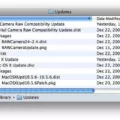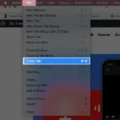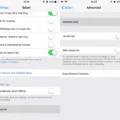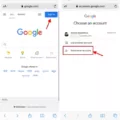The Admin User on Mac is a user account that has the highest privileges and access to all system settings and files. This user is typically used for system maintenance and management, but it can also be used by individuals who want complete control over their Mac.
However, there are times when you may need to delete an Admin User on Mac, but you may not have the password or login details for that user. In such cases, it can be challenging to delete the user account, but it is still possible.
Here are the steps to delete an Admin User on Mac without a password:
Step 1: Boot your Mac in Single User Mode
Hold the Command key and the “S” key as soon as the screen appears when the computer is booting up. This will take you to Single User Mode, which is a command-line interface that lets you access the Mac file system.
Step 2: Mount the File System
Once you are in Single User Mode, type /sbin/mount -uw / when the dialogue box in black and white appears. This will mount the file system in read-write mode, which will allow you to make changes to the system files.
Step 3: Remove the Setup File
Once the file system is mounted, you need to remove the setup file. Type the command “rm var/db/.applesetupdone” and press Enter. This will delete the setup file that tells your Mac that the initial setup process has been completed.
Step 4: Restart your Mac
After you have deleted the setup file, you can restart your Mac by typing the “reboot” command and pressing Enter. This will bring your Mac back to the normal login screen.
Step 5: Create a New Admin User
Once your Mac has restarted, it will take you through the initial setup process again. This time, you will be able to create a new Admin User account without a password.
Step 6: Delete the Old Admin User
Once you have created the new Admin User account, you can log in and delete the old Admin User account. To do this, go to the Apple menu, select System Preferences, and then click on Users & Groups. Select the old Admin User account, and click on the Remove button (looks like a minus sign) below the list of users. Click on Delete User to confirm the deletion.
Deleting an Admin User on Mac without a password can be a bit tricky, but it is still possible. By following the steps outlined above, you can easily delete an Admin User account and create a new one without any hassle. However, it is important to note that deleting an Admin User account will delete all files and data associated with that account, so make sure to back up any important files before proceeding with the deletion.

Forcing Administrator Deletion on Mac
To force an administrator to delete a file or folder on a Mac, you can use the Terminal application to execute a command that will override any permissions or restrictions set by the administrator. Here are the steps to force delete as an administrator on a Mac:
1. Open the Terminal application by navigating to Applications > Utilities > Terminal.
2. Type “sudo rm -rf” (without the quotes) followed by a space.
3. Drag and drop the file or folder that you want to delete into the Terminal window. This will insert the file or folder path into the command.
4. Press Enter on your keyboard. You will be prompted to enter your administrator password.
5. Type in your administrator password and press Enter. The file or folder will be deleted, even if the administrator had set permissions or restrictions to prevent it.
It’s important to note that using the “sudo rm -rf” command can be risky and may result in unintended consequences, such as deleting important system files. Use this command with caution and only when necessary.
Deleting an Administrator Account on a MacBook Pro Without a Password
To delete an administrator account on a MacBook Pro without a password, you can follow these steps:
1. Restart your MacBook Pro and hold down the Command and R keys until the Apple logo appears.
2. Select “Terminal” from the “Utilities” menu.
3. Type “resetpassword” (without quotes) in the Terminal window and press Enter.
4. Select the hard drive that contains the administrator account you want to delete.
5. Choose the administrator account you want to delete from the drop-down list.
6. Click on the “Reset Home Directory Permissions and ACLs” button.
7. Click on the “Delete User” button.
8. Confirm that you want to delete the user account by clicking on “OK.”
9. Restart your MacBook Pro.
Note: Deleting an administrator account will remove all data associated with that account. If you want to keep any files, be sure to back them up before deleting the account.
Removing Administrator Account Without Password
To remove an administrator account without a password, you can use the “net user” command in the command prompt. Here are the steps to follow:
1. Press the Windows key + R to open the Run dialog box.
2. Type “cmd” and press Enter to open the Command Prompt.
3. In the Command Prompt, type “net user” and press Enter to see a list of all user accounts on your computer.
4. Find the administrator account that you want to remove and note down its username.
5. Type “net user username /delete” (replace “username” with the actual username of the administrator account) and press Enter.
6. The Command Prompt will confirm that the account has been deleted.
Note that you need to have administrative privileges to delete an administrator account. If you’re not already logged in as an administrator, you may need to provide administrator credentials to complete this process. Also, be aware that deleting an administrator account will remove all the files and data associated with that account, so make sure you have a backup of any important data before proceeding.
Conclusion
Managing the admin user on a Mac is a crucial task for maintaining security and control over your device. Whether you need to delete an existing admin user or create a new one, it is important to follow the proper steps to avoid any unintended consequences. Always remember to create strong passwords and keep them secure, as well as regularly monitor your user accounts to ensure that only authorized individuals have access. By staying vigilant and taking the necessary precautions, you can keep your Mac safe and secure for years to come.








